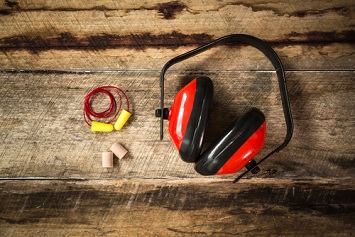October is National Protect Your Hearing Month! In workplaces where noise levels exceed the Occupational Safety and Health Administration’s (OSHA) action level of 85 A-weighted decibels (dBA) as a time-weighted average, employers must put a hearing conservation program in place. In addition to reducing noise levels and noise exposures, selecting appropriate hearing protection, audiometric testing, and recordkeeping, a hearing conservation program includes employee training.

OSHA’s occupational noise exposure rule, 29 CFR 1910.95, not only requires training, it also specifies what that training program must cover. If you have employees in a hearing conservation program, you’re required to provide this annually for as long as they remain in the program.
Hearing Conservation Basics
Training for workers who are enrolled in a hearing protection program must cover:
How noise can affect hearing. Noise damages the structures in the ear that transmit sound. Workers may sometimes notice a temporary hearing loss if they are exposed to extremely loud noise, for example, at a concert, but over time, damage like that can become permanent.
Early-stage hearing loss can affect a person’s ability to understand speech; as it progresses, it can affect the ability to hear all sounds. As hearing loss worsens, individuals may experience isolation, annoyance, difficulty concentrating, and increased risk of accidents. The stress of hearing loss can contribute to ulcers, hypertension, and other physical symptoms.
The purpose of hearing protection equipment. The hearing protection devices issued to workers—earplugs and earmuffs—if used properly, should reduce workers’ noise exposure below the legal limit, and prevent damage to their hearing. Hearing protection is required in areas where other measures could not reduce noise within acceptable limits.
The advantages, disadvantages, and attenuation of various types of hearing protection. There are two main types of hearing protective devices: ear plugs and earmuffs.
- Ear plugs are easy to use, and more comfortable than ear muffs, especially in hot or damp environments. They’re less likely to interfere with other safety gear (such as safety glasses). However, they provide less protection than earmuffs. If they are not correctly inserted, they may not provide enough protection. If workers remove them and reinsert them when their hands are dirty, they may irritate the ear canal and cause infections.
- Ear muffs usually reduce noise levels more than ear plugs and are easier to fit and more durable. However, they are expensive to replace and can be far less comfortable than ear plugs, especially in hot or damp work environments.
How to select, fit, and use hearing protection. OSHA requires employers to provide workers with the opportunity to select a hearing protection device that fits them comfortably. The more comfortable it is, the more likely they are to use it. Train workers to follow manufacturers’ instructions for the proper use of hearing protection.
How to properly care for hearing protection. Hearing protection must be kept clean; dirty or damaged earplugs should be replaced. Earmuff cushions must be replaced when they are no longer soft, and the head band must be replaced when it no longer keeps pads snug against the worker’s head.
The purpose of audiometric testing and the test procedures. An employee’s initial hearing test provides a baseline measurement that future tests can be compared to, so that sharpness and acuity of worker’s hearing over time can be monitored. Each worker will have a baseline audiogram within 6 months of their initial assignment to a noisy work area, and annual audiograms after that.
In addition to the training provided, employers must make a copy of OSHA’s hearing conservation standard available to trainees and post one in the workplace.
